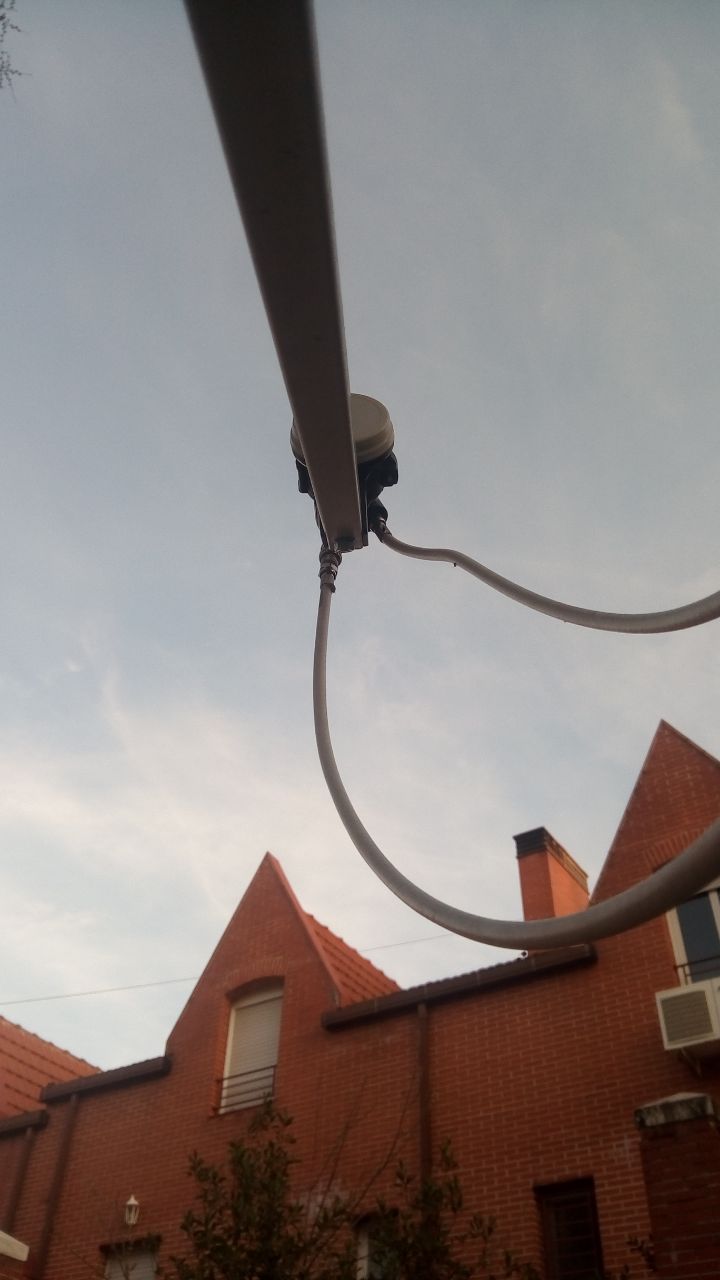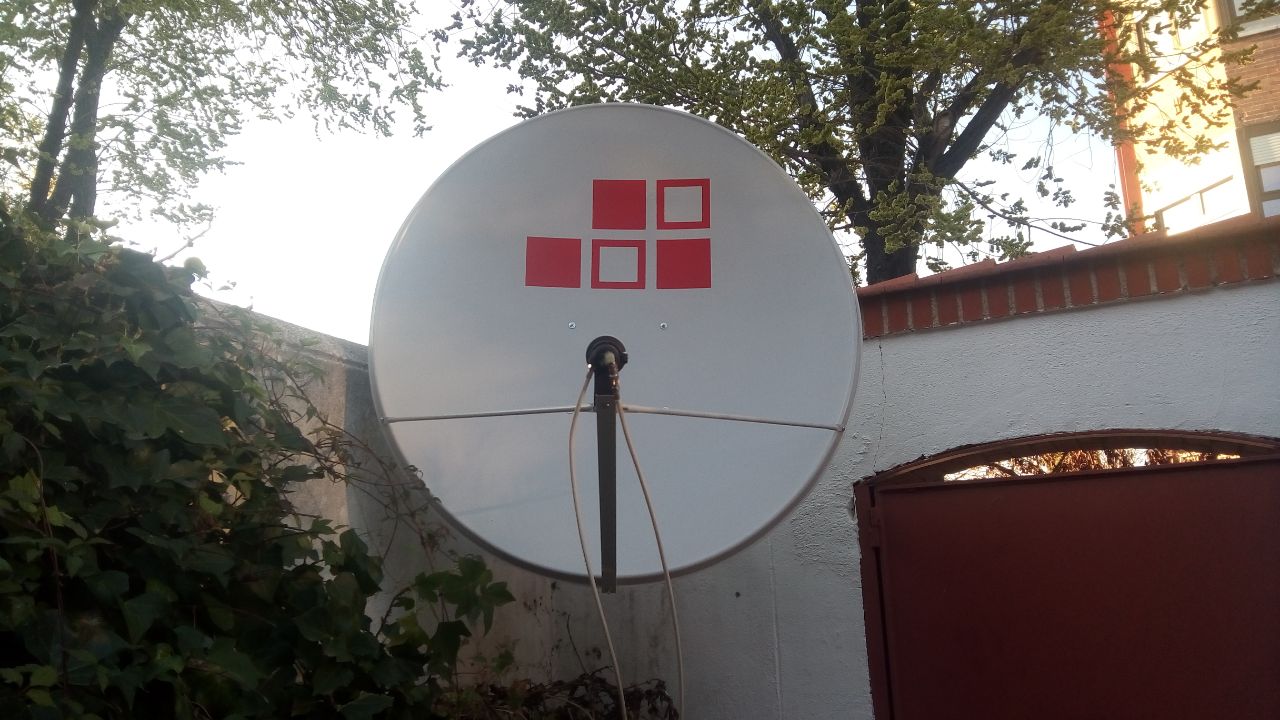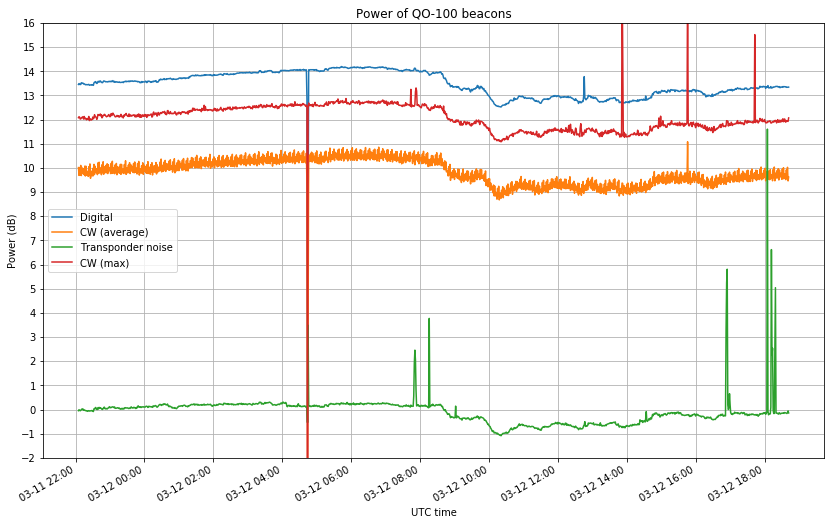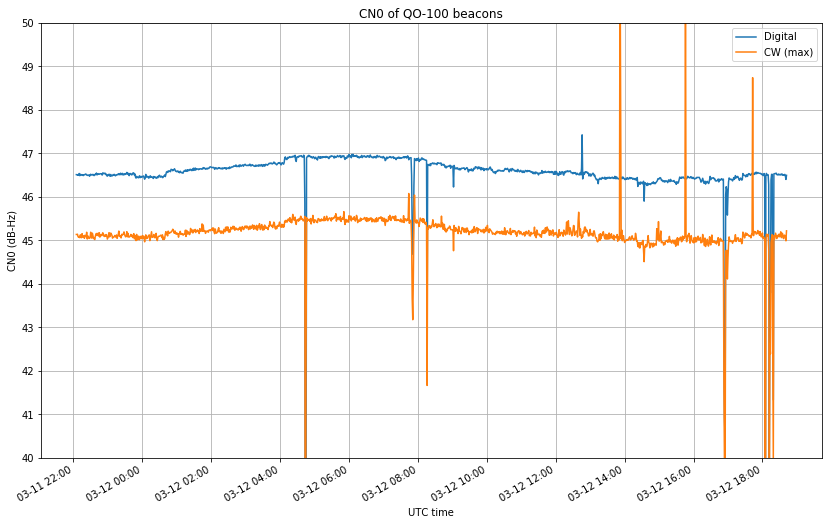I have replaced the dish I had for receiving Es’hail 2 by a new one. The former dish was a 95cm offset from diesl.es which was a few years old. I had previously used this dish for portable experiments, and it had been lying on an open balcony for many months until I finally installed it in my garden, so it wasn’t in very good shape.
Comparing with other stations in Spain, I received less transponder noise from the narrowband transponder of QO-100 than other stations. Doing some tests, I found out that the dish was off focus. I could get an improvement of 4dB or so by placing the LNB a bit farther from the dish. This was probably caused by a few hits that the dish got while using it portable. Rather than trying to fix this by modifying the arm (as the LNB couldn’t be held in this position), I decided to buy a new dish.
The former dish can be seen in the picture below, taken just before dismantling it.

The new dish I’ve bought is a 1.2m offset, also from diesl.es. Before dismantling the older dish, I took the photo shown below as a reference of where the dish was pointing to help me in aligning the new dish. As you can see, the dish looks over the top of my house.

The new dish can be seen installed in the image below.

The new dish works quite well. I can even detect the noise of the wideband transponder, as I showed in this tweet. I haven’t measured the noise of the narrowband transponder accurately, but I get 7 or 8dB.
As I had done some power measurements of the QO-100 beacons a few days ago and I haven’t changed anything in my receive system except for the dish, I have done power measurements again to see how much signal I have gained with the new dish. After doing almost 19 hours of measurements, I have seen that, in average, the BPSK beacon is now 6.7dB stronger, while the CW beacon is 6.4dB stronger. So, without insisting too much on the precision of these measurements (the LNB gain can change somewhat over time, as well as the power of the transponder), I can estimate that now I have 6.5dB more signal from QO-100.
Remembering that the gain of a dish scales with the radius squared, the change in gain due to passing from 95cm to 1.2m is 2dB. The additional 4.5dB I have gained come from the older dish being off focus (remember that I estimated a gain of 4dB or so if the LNB was placed in the correct focus).
Interestingly, the power of the transponder noise floor is only 4.8dB stronger now. This is not so strange, since the noise measured on the transponder floor is the sum of the system noise plus the transponder noise itself, and with the previous dish the transponder noise (plus system noise) was only a few dB above system noise.
Knowing that the transponder noise has increased 6.5dB, while the sum of transponder noise plus system noise has only increased 4.8dB, we can do some simple calculations and obtain that the S/N of the transponder noise with the old dish was 1.4dB (giving 3.8dB of (S+N)/N). This matches more or less what I had, though I didn’t do any precise measurements. With the newer dish, the S/N of the transponder noise should be 6.5dB more, which gives 7.9dB (for an (S+N)/N of 8.6dB). Again, this matches the 8dB of (S+N)/N that I have estimated to have with the new dish, so everything seems to match pretty well.
Using the measurements done with the new dish, I have generated the graphs below. As you can see, the SNR of the beacons has improved by 1.7dB. After all, their power increased 6.5dB, while the power of the noise only increased 4.8dB. Again, the reason for this is that with the old dish the S/N of the transponder noise was only 1.4dB, and the SNR of the transponder signals wasn’t completely dominated by the transponder noise: a couple dB of SNR could be gained by going to a better dish.

Now that I have a transponder noise S/N of nearly 8dB, very little SNR can be gained by going to a larger dish. Indeed, if one were to remove all the system noise, the SNR would only improve by 0.6dB.
The image below shows the CN0 of both beacons. Using my measurements with the previous dish, I estimated a CN0 of 45dB for the BPSK beacon, but now I see that this measurement was somewhat affected by my older dish, and taking 47dB instead is more accurate.

The calculations and plots in this post have been done in this Jupyter notebook.
Very nice article. Would you conclude that upgrading to 1.2 m only makes sense for receiving the wide bandwidth transmonder?
I agree. For most uses, the SNR of the signals is high, and the transponder is strong, so the gains obtained with a dish larger than 60cm are small.